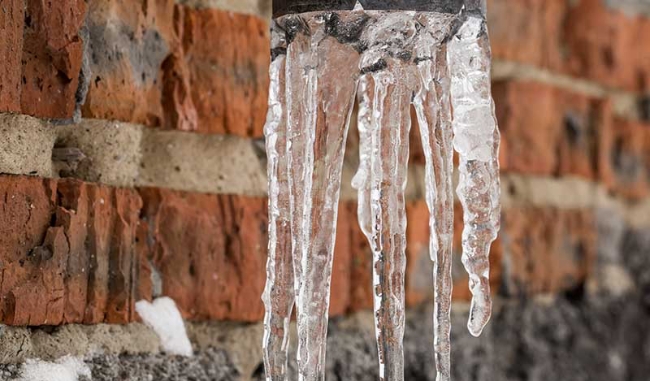Ways to Safeguard Your Plumbing from Freezing: Key Advice
Ways to Safeguard Your Plumbing from Freezing: Key Advice
Blog Article
How do you feel with regards to Prevent Frozen Pipes ?

Winter can wreak havoc on your plumbing, specifically by freezing pipes. Right here's exactly how to avoid it from taking place and what to do if it does.
Intro
As temperature levels decline, the threat of frozen pipes rises, potentially resulting in expensive repair services and water damage. Understanding how to prevent icy pipes is crucial for house owners in cold climates.
Comprehending Icy Pipelines
What causes pipes to freeze?
Pipes ice up when revealed to temperature levels listed below 32 ° F (0 ° C) for extended periods. As water inside the pipes freezes, it expands, putting pressure on the pipe walls and possibly creating them to break.
Dangers and damages
Frozen pipes can lead to supply of water disruptions, residential property damages, and expensive repair work. Ruptured pipelines can flood homes and cause considerable architectural damage.
Indicators of Frozen Water Lines
Identifying icy pipes early can avoid them from rupturing.
Exactly how to determine frozen pipes
Seek reduced water circulation from faucets, unusual odors or noises from pipelines, and noticeable frost on exposed pipelines.
Prevention Tips
Shielding prone pipes
Cover pipes in insulation sleeves or make use of warm tape to protect them from freezing temperature levels. Concentrate on pipelines in unheated or exterior areas of the home.
Home heating techniques
Keep interior areas sufficiently warmed, specifically locations with pipes. Open up cabinet doors to allow warm air to circulate around pipes under sinks.
Safeguarding Outdoor Plumbing
Garden hoses and outdoor taps
Separate and drain pipes yard hose pipes before winter season. Set up frost-proof spigots or cover exterior taps with protected caps.
What to Do If Your Pipes Freeze
Immediate activities to take
If you presume frozen pipes, maintain faucets open to relieve stress as the ice melts. Use a hairdryer or towels soaked in hot water to thaw pipelines gradually.
Long-Term Solutions
Structural modifications
Take into consideration rerouting pipes away from exterior walls or unheated areas. Include additional insulation to attic rooms, cellars, and crawl spaces.
Upgrading insulation
Purchase top notch insulation for pipelines, attics, and walls. Appropriate insulation helps maintain consistent temperature levels and lowers the threat of icy pipes.
Verdict
Avoiding icy pipelines needs proactive measures and fast actions. By recognizing the reasons, signs, and preventive measures, home owners can protect their pipes throughout cold weather.
5 Ways to Prevent Frozen Pipes
Drain Outdoor Faucets and Disconnect Hoses
First, close the shut-off valve that controls the flow of water in the pipe to your outdoor faucet. Then, head outside to disconnect and drain your hose and open the outdoor faucet to allow the water to completely drain out of the line. Turn off the faucet when done. Finally, head back to the shut-off valve and drain the remaining water inside the pipe into a bucket or container. Additionally, if you have a home irrigation system, you should consider hiring an expert to clear the system of water each year.
Insulate Pipes
One of the best and most cost-effective methods for preventing frozen water pipes is to wrap your pipes with insulation. This is especially important for areas in your home that aren’t exposed to heat, such as an attic. We suggest using foam sleeves, which can typically be found at your local hardware store.
Keep Heat Running at 65
Your pipes are located inside your walls, and the temperature there is much colder than the rest of the house. To prevent your pipes from freezing, The Insurance Information Institute suggests that you keep your home heated to at least 65 degrees, even when traveling. You may want to invest in smart devices that can keep an eye on the temperature in your home while you’re away.
Leave Water Dripping
Moving water — even a small trickle — can prevent ice from forming inside your pipes. When freezing temps are imminent, start a drip of water from all faucets that serve exposed pipes. Leaving a few faucets running will also help relieve pressure inside the pipes and help prevent a rupture if the water inside freezes.
Open Cupboard Doors
Warm your kitchen and bathroom pipes by opening cupboards and vanities. You should also leave your interior doors ajar to help warm air circulate evenly throughout your home.

Do you appreciate reading up on How to prepare your home plumbing for winter weather? Try leaving feedback below. We will be glad to hear your views about this blog entry. In hopes that you visit us again before long. Liked our blog entry? Please share it. Help others discover it. Thank you for your time invested reading it.
Visit Report this page